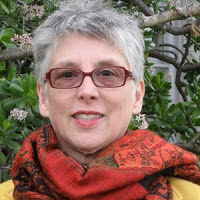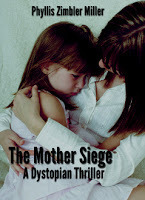Tips for Authors on Amazon
Guest post by Phyllis Zimbler Miller:
If you are a book author, you want to be on Amazon
regardless of where else your book might be offered for sale. Amazon is the elephant in the room when it
comes to online book sales, and there are many elements of Amazon that help
authors get their books discovered (and hopefully purchased).

If you are self-publishing a physical book, you might
consider using Amazon’s CreateSpace because of the speed in which a paperback
you approve for publication on CreateSpace automatically appears for purchase
on Amazon. If you consider other
self-publishing sites, see if you can find out how quickly your book will
appear on Amazon.
If you are self-publishing an ebook, Kindle has its own
proprietary conversion software and officially states that it no longer
supports third-party conversion software such as Calibre. Do check out this consideration before using
any conversion software except for Kindlegen.
(Yes, you can upload a Word doc to the Kindle Direct Publishing
dashboard, but you may not be happy with the formatting result.)
Okay, now that we have gotten the actual book production out
of the way, what might be the most important consideration for having your book
on Amazon?
What is your author
name?
Five years ago when I self-published for the first time on
Amazon I would not have thought this such an important question. I knew that Phyllis Miller was too common a
name and I use Phyllis Zimbler Miller when I write.
But recently I have begun to better understand why people
use pen names. Let’s look at this more
closely.
I am not a big fan of an author hiding behind a pseudonym
and using a fake bio on Amazon (unless it is for security reasons). I feel that in most cases this action could
damage reader relationships if the dishonesty is discovered.
On the other hand, using a pen name publicly associated with
a real person could be beneficial for separating different kinds of books an
author might write.
Let me give you an example:
I have recently realized that, while I list my fiction and
nonfiction books in separate sections at the end of all my ebooks, it may not
be the smartest strategy to have the listings for all these books appear on the
same Amazon Author Central profile of Phyllis Zimbler Miller.
Perhaps, for example, a separate profile of Phyllis Z.
Miller with the listings for only the nonfiction books would make things
clearer for prospective readers who have clicked through on my author profile
from a nonfiction Amazon book sales page.
Then people clicking through on my author profile of Phyllis Zimbler
Miller from a fiction Amazon book sales page would only see the listings for
fiction books.
In the bio of each of the two profiles I could include the
information that I write in another area also, and include the author name for
that area.
Obviously it is important to make this decision sooner than
later because it impacts what name is on the cover design for your book.
Now I am embarking on writing children’s picture books, and
I plan to use P.Z. Miller for my pen name for those books on Amazon. P.Z. Miller seems a more child-friendly name,
and the Amazon author profile for that name will only have the listing of
children’s picture books while the bio on that page will include the other
areas in which I write.
One more tip: Ease of spelling is an important
consideration. Do you know how many
people spell Phyllis differently than the spelling of my name? If the spelling of your name is difficult for
others, consider how you might make this easier for prospective readers.
What categories are
you choosing for your book?
A book’s categories on Amazon are very important for people
discovering your book. You want to pay
close attention to the categories that you choose.
What you need to know is that you are NOT held to the
choices that you get in the KDP dashboard, which are not as extensive as the
actual categories in the Kindle store.
Once your book is published via KDP, you can email KDP and ask for two
categories of your own choosing.
You decide on these categories by going to the Kindle Store
on the search dropdown on Amazon’s home page and clicking on “go” without
putting the name of any one book or author in the search field.
Then on the left click on Kindle ebooks and start exploring
the categories and sub-categories listed there.
Drill down as far as you can go in each category and its subsequent
sub-categories.
Now it is important to be accurate – you do not want to
disappoint readers because you have chosen a category that is not correct for
your book. But you can figure out where
your ebook might have a better chance of getting noticed. (Check out the number of ebooks in each
category.)
And once you have decided on the best categories – and KDP
has made the changes for you – you are not done. You should revisit these decisions every so
often to see if perhaps there are new categories that might fit your book even
better.
What is Amazon
changing?
The one thing you can count on is that Amazon is making
changes. And it is also a good bet that
Amazon will NOT email Amazon Author Central authors (you have to “claim” being
an author on Amazon to be part of Amazon Author Central) to tell you the
changes.
That’s why blogs such as this one are so important. It is up to you to try to keep abreast of the
major changes on Amazon that can affect your book.
And it is also up to you to be willing to experiment with
possible new opportunities – and be understanding that not every good strategy
works for all authors.
But given that Amazon is the elephant in the room – be there
or be square, as the old expression goes.

Phyllis Zimbler Miller is the author of fiction and
nonfiction books, including TOP TIPS FOR HOW TO MARKET YOUR BOOK ON AMAZON AND
FACEBOOK, that can be seen on Amazon at www.amazon.com/author/phylliszimblermiller
and she is also the co-founder of the online marketing company www.MillerMosaicLLC.com
She is also experimenting with writing an entire novel – the
dystopian thriller THE MOTHER SIEGE – on Wattpad. The first chapters can be read at http://budurl.com/MSintro
--------
Tony Eldridge is the author of The Samson Effect , an action/adventure novel that Clive Cussler calls a "first rate thriller brimming with intrigue and adventure." He is also the author of the Twitter marketing book, Conducting Effective Twitter Contests . His new novel, The Lottery Ticket , was just recently released on Kindle.








Published on July 21, 2013 19:48
No comments have been added yet.



